Ditch traditional text analysis for these engaging and rigorous We Were Liars activities for your secondary English Language Arts classroom.
As educators, we strive to immerse our students in the rich tapestry of storytelling, inviting them to explore narratives from various angles. E. Lockhart’s We Were Liars is a novel that not only captivates with its suspenseful plot, but also beckons educators to weave creativity and critical thinking into their teaching methods.
In this blog post, you’ll unveil a treasure trove of 8 engaging activities tailored for your We Were Liars novel study. These activities go beyond the pages, aiming to foster a dynamic and immersive learning experience.
Whether you’re a seasoned educator seeking fresh ideas or a newcomer eager to infuse vibrancy into your classroom, these activities promise to unlock the doors to literary exploration.
Let’s dive into the world of We Were Liars and discover how to make your novel study an unforgettable adventure for your students.
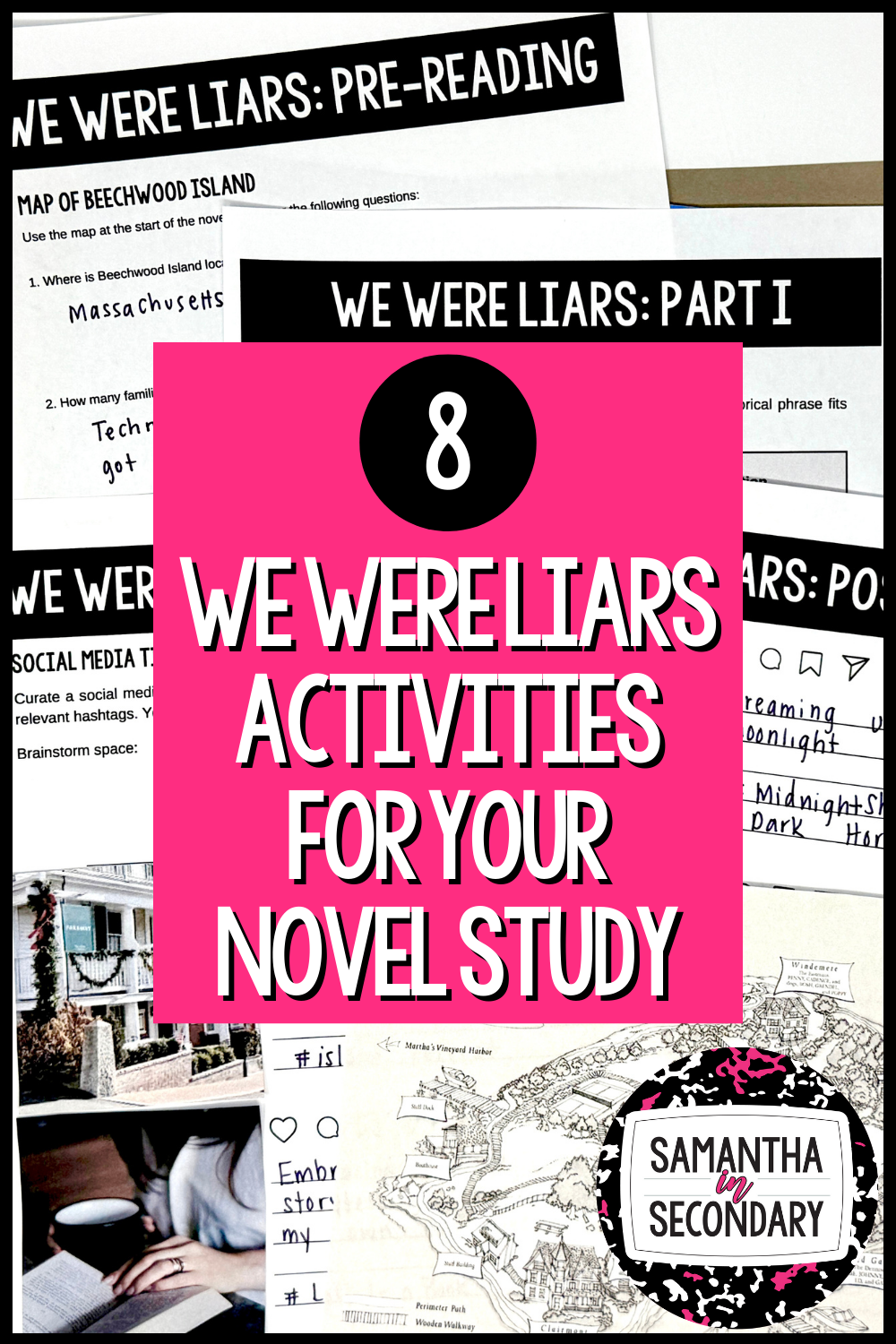
Pre-Reading Activities

#1: Examine Beechwood Island
One way to allow students to begin noticing the nuances of Beechwood Island is to have them study the map at the beginning of the novel. Ask students to recall details such as how many homes are located on the island, how many families live there, and how many houses there are. Dig a little bit further by asking students why the island might have houses for staff only. Encourage them to explore the map even more by simply asking, “What do you notice?”
#2: Blog Entry: “Lifestyles of the Rich and Famous”
Give students a chance to explore their own ideas about what it means to be rich and famous by having them write a blog entry about the “Lifestyles of the Rich and Famous”. Use these entries later after seeing how the Sinclair family lives. Were their predictions accurate?
During Reading Activities
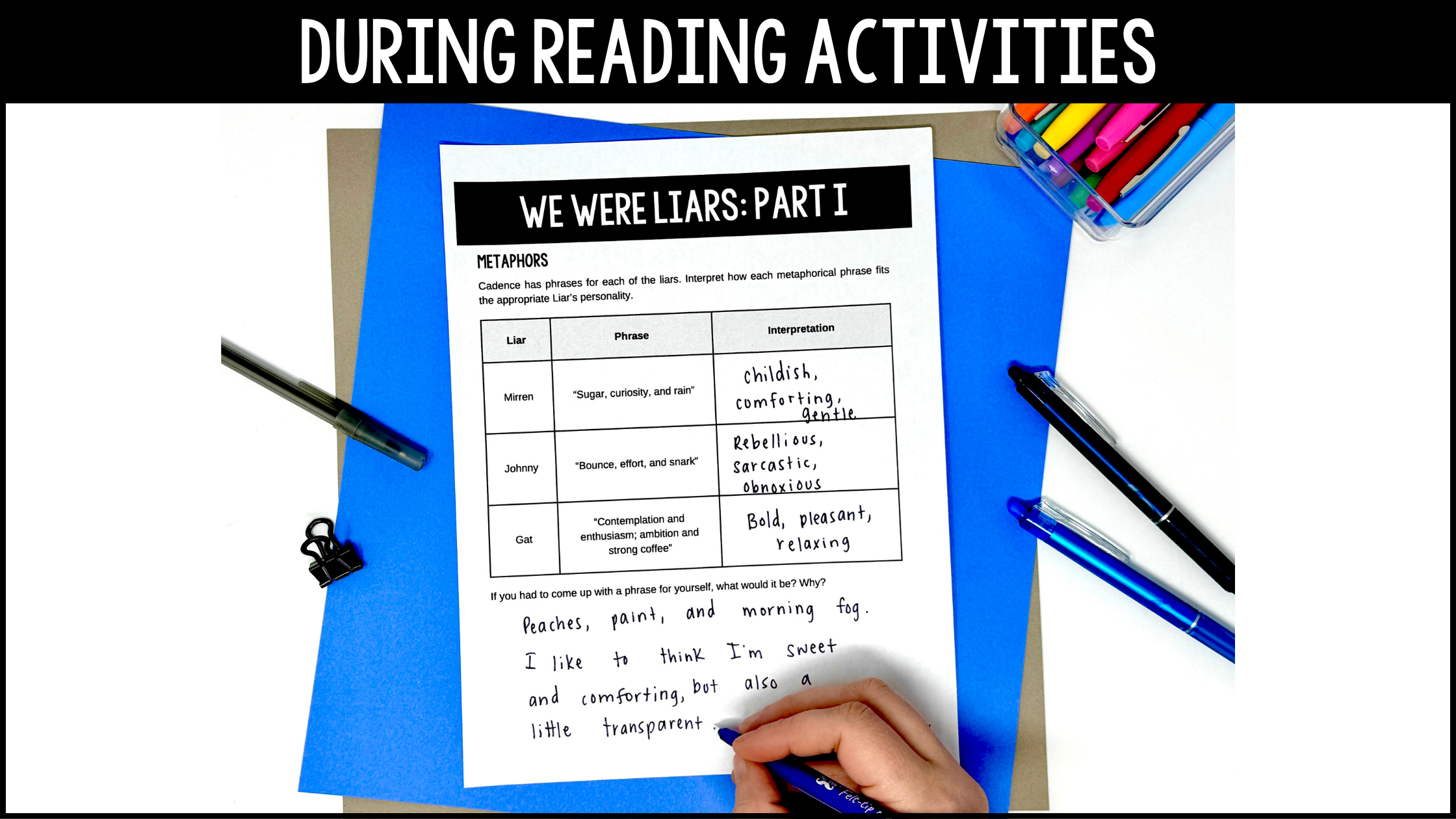
#1: News Reporting on The Accident
In Part I, readers are introduced to a horrible accident involving the main character, Cadence. Ask students to slip on their reporter’s cap to discover the who, what, where, when, and why of the incident.
#2: Create a Motto
In Chapter 38, the Liars discuss mottos various people in the family have and create their own. Have students track these mottos, analyze what they may mean, and come up with their own.
#3: Analyze the Fairytales
We Were Liars uses fairytales throughout the novel to parallel the story’s main plot line. According to the author, Cadence uses these fairytales to tell truths about her family that were unspeakable any other way. Ask students to read these fairytales and analyze what Cadence is trying to say about her family.
#4: Explore Repressed Memories
Add a nonfiction text connection by having students read about repressed memories. Have students compare what they’ve learned to the story.
Post-Reading Activities
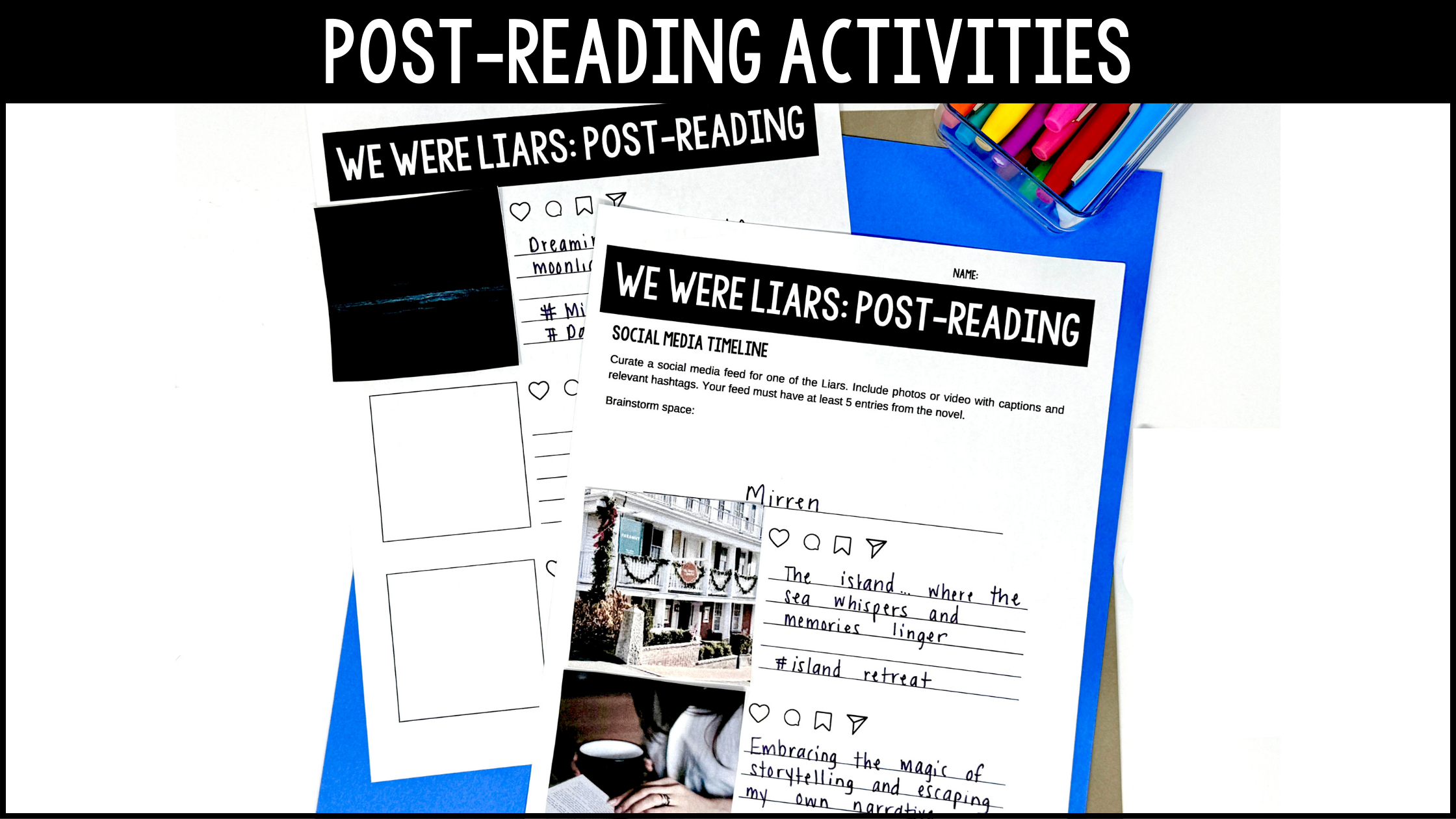
#1: Book Flat Lay Project
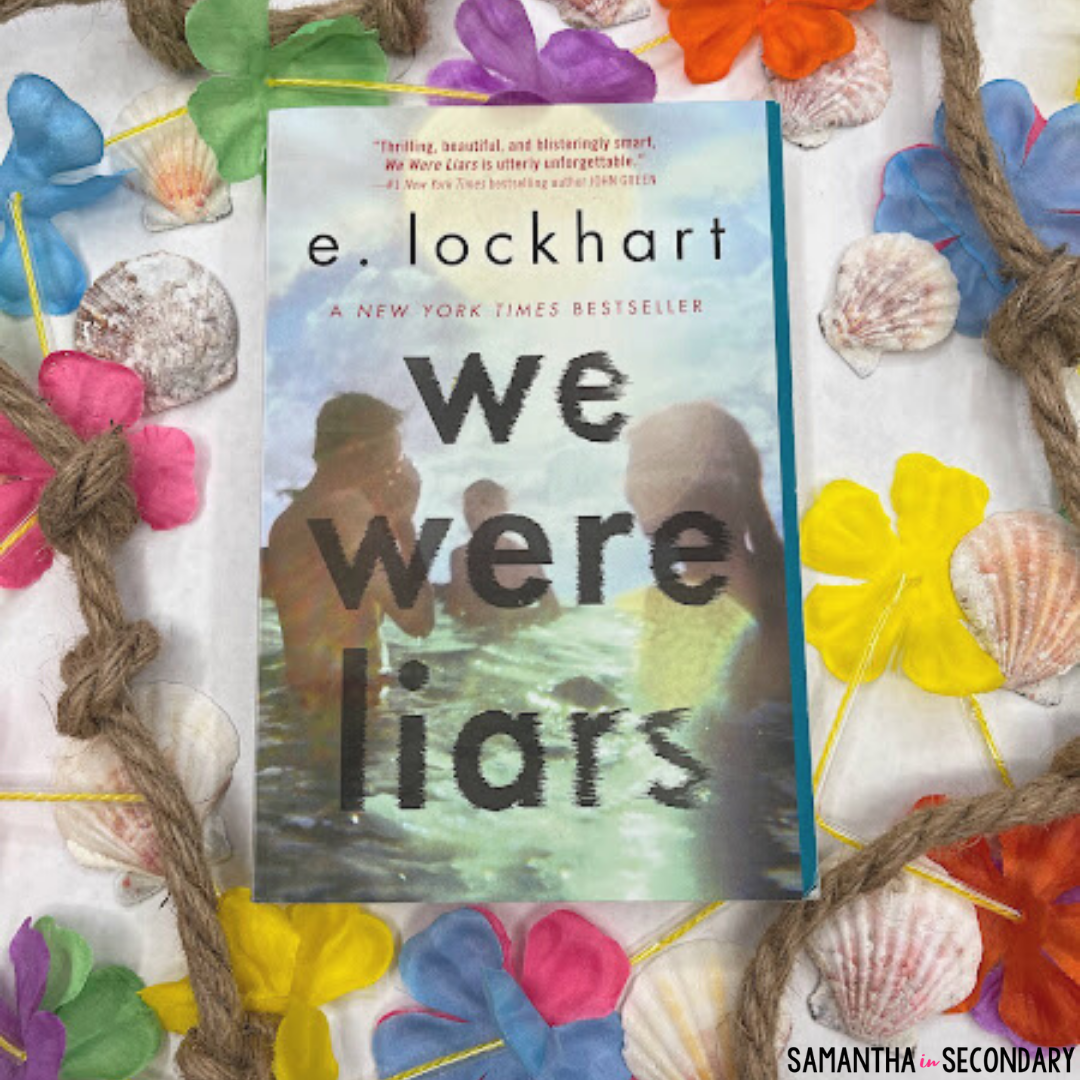
Book Flat Lays are one of my favorite creative book projects, but they work especially well for We Were Liars. The gist of the project is to collect elements that relate to the book, lay them out with the book to create an aesthetically pleasing flat lay, take a photo, and then reflect on the objects. The project incorporates so many 20th century skills that it becomes so much more than just a reading project. Click here to read more about book flat lays.
#2: Rewrite the Fairytale
Fairy tales are an important narrative device in We Were Liars. Leverage this complexity with a fairy tale rewrite. Make sure students know they aren’t just making a random story. The fairy tale should function similarly to We Were Liars in that it should help send a message about a broader theme.
Get All of My We Were Liars Activities!
How does 27 response to literature activities formatted for each section of We Were Liars sound? Get my done-for-you novel study right here and have everything you need to implement this engaging novel in your classroom today.
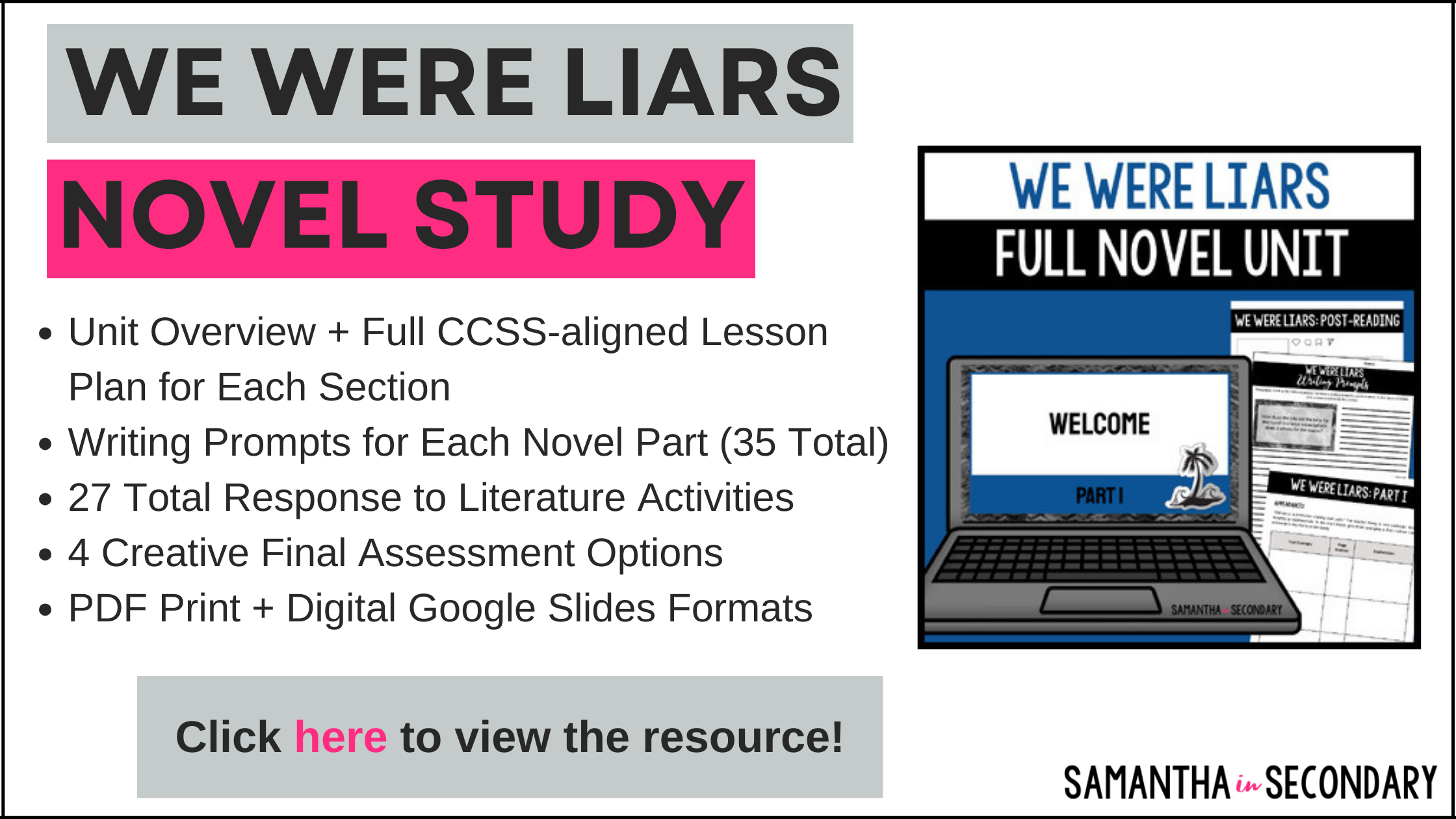
Exploring the novel We Were Liars through a variety of engaging activities can truly enrich the secondary English Language Arts classroom experience. By delving into themes of family, privilege, memory, and deception, students are not only sharpening their literary analysis skills but also developing a deeper understanding of complex human experiences.
Follow me on Instagram for more great novels to share with your secondary ELA students.
Happy teaching!




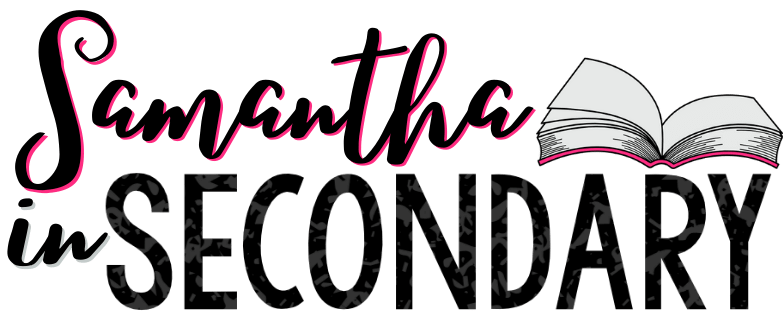



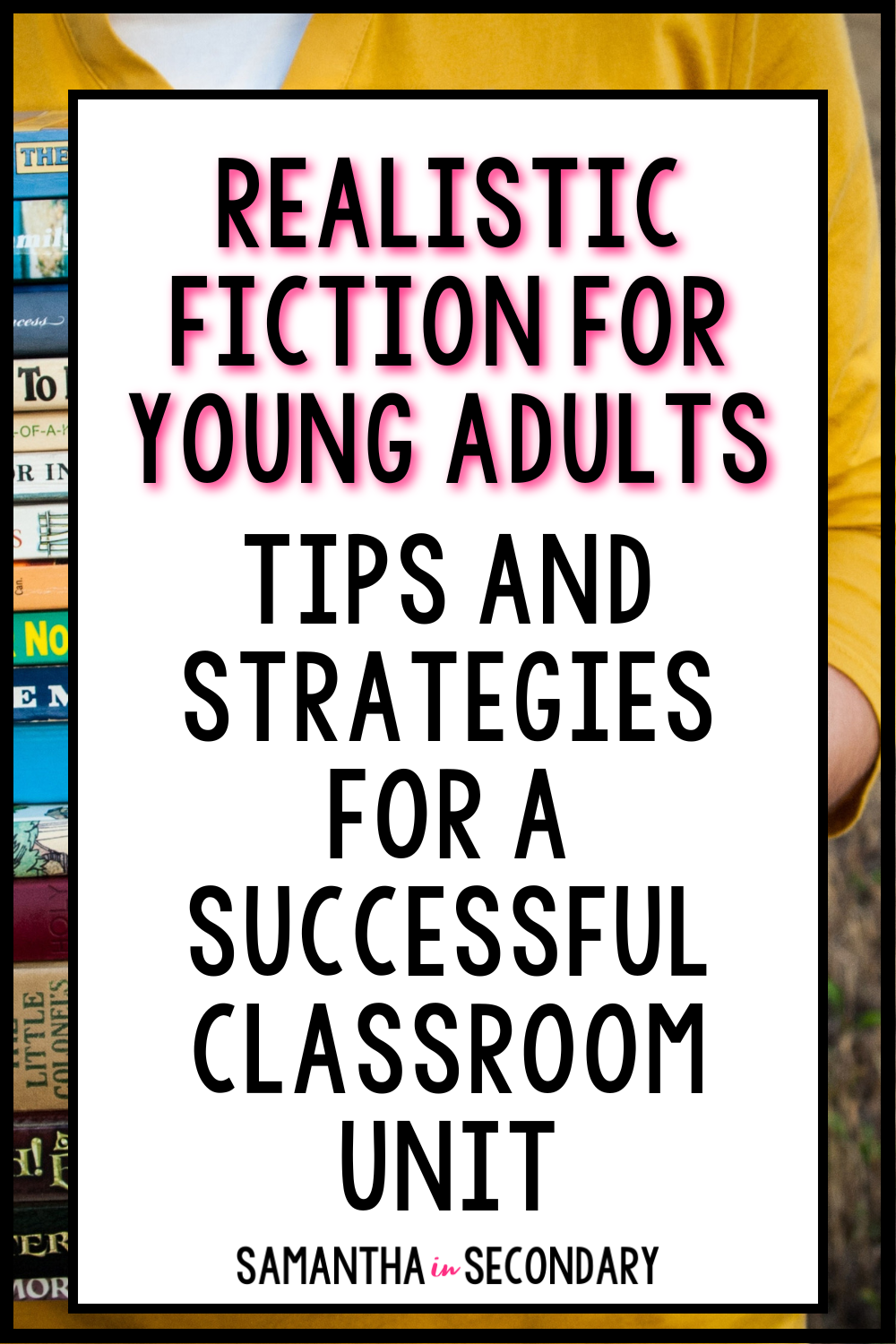
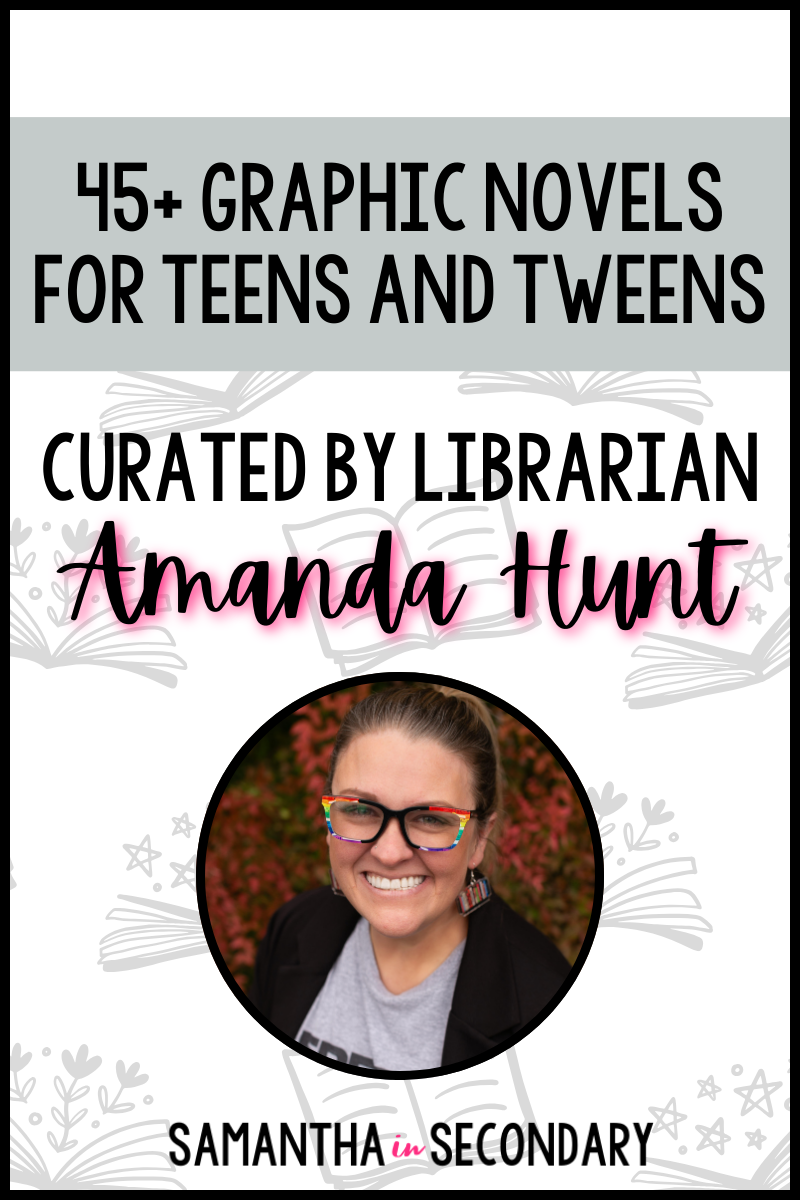
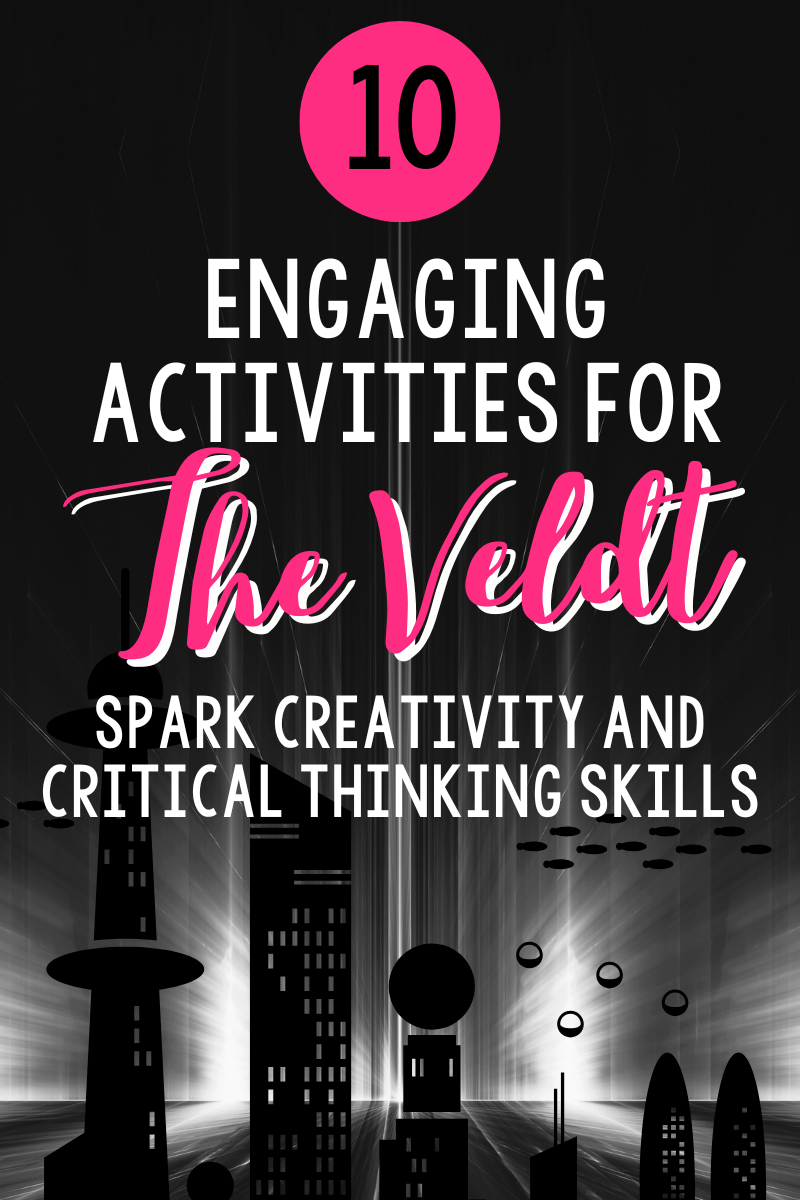


 How can poetry
How can poetry 
 Poetry is
Poetry is

 Do you ha
Do you ha
 Press play on this clip
Press play on this clip